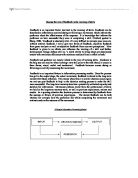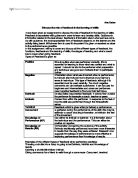'Discuss the role of feedback in the learning of skills'.
'Discuss the role of feedback in the learning of skills'
According to 'The A-Z of physical education' by James et al 2000, feedback is the information received by the individual or group either during or after completion of the performance. There are many different types of feedback. These are:
Intrinsic (inherent) feedback - This comes from within the performer and is in response to the feel of how the skill was performed through the kinaesthetic sense.
Extrinsic (augmented) feedback - This type of feedback comes from outside the performer and can be from the coach, teacher, teammates or spectators.
Continuous feedback - This is received during the activity and can come from the performers themselves or the coach.
Terminal feedback - This is received after the activity and can be given immediately by the coach or some time later, for example when analysing a video of the performance.
Knowledge of performance - This type of feedback can be both intrinsic and extrinsic and is information about the technique and performance. For example, a coach will talk to the team after a match about how they played. The feedback can be positive or negative.
Knowledge of results - This is generally extrinsic and is information concerning the outcome of the activity, for example, receiving a time in athletics or receiving a score from the judges in gymnastics.
Feedback has a variety of purposes. These include the need to detect and correct errors in a performance, to provide motivation during the learning process and to reinforce the actions of the performer. It is vital that all feedback given is accurate, understandable and relevant to the individual or group to allow them to improve their skills. It is also important that feedback is limited to key points, with the most attention directed to specific or major faults in the performance, particularly with beginners. If too many minor errors are picked up on at the same time then the performer will not know what to pay the most attention to. If major errors are left then this may lead to the performer presuming that their actions are correct, making it more difficult to deal with later. For example, in netball a major error would be the performers positioning on court. If this was not sorted then the player would presume that they were moving to the correct place, and therefore would tend to use the same movement patterns, making it difficult for the team to get the ball down the court. The player needs to be told accurately where they need to be on the court so that they can correct it early on in the learning process, therefore making it easier for them to change what they do.







